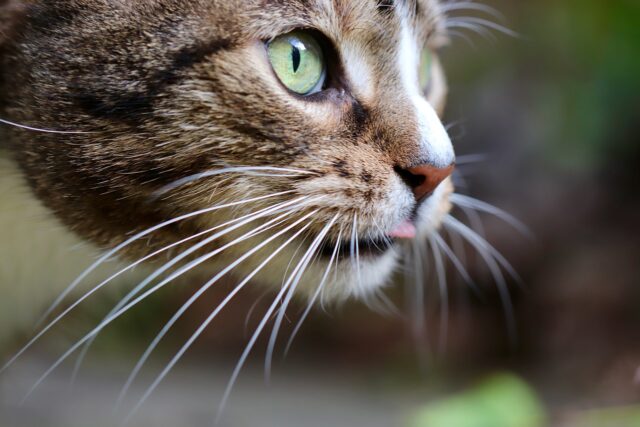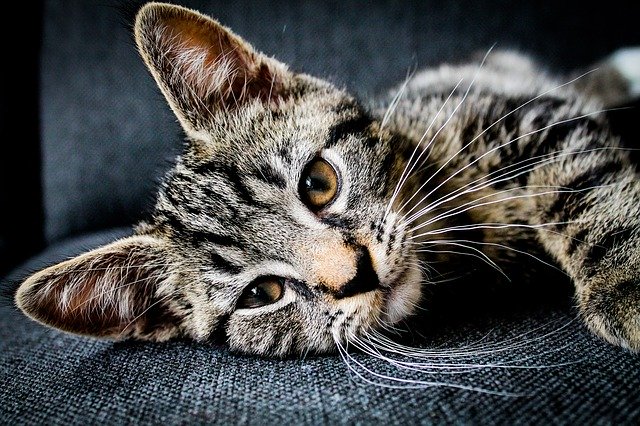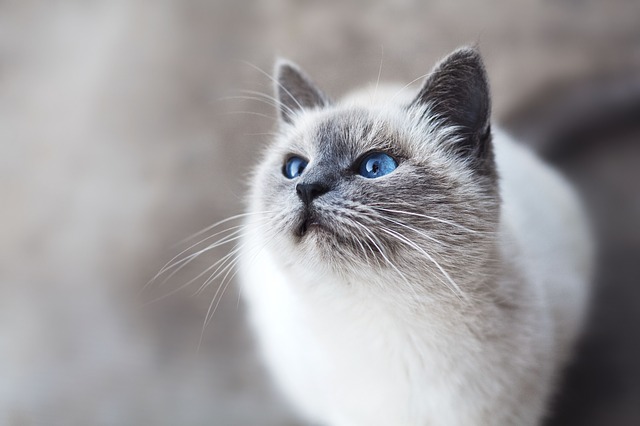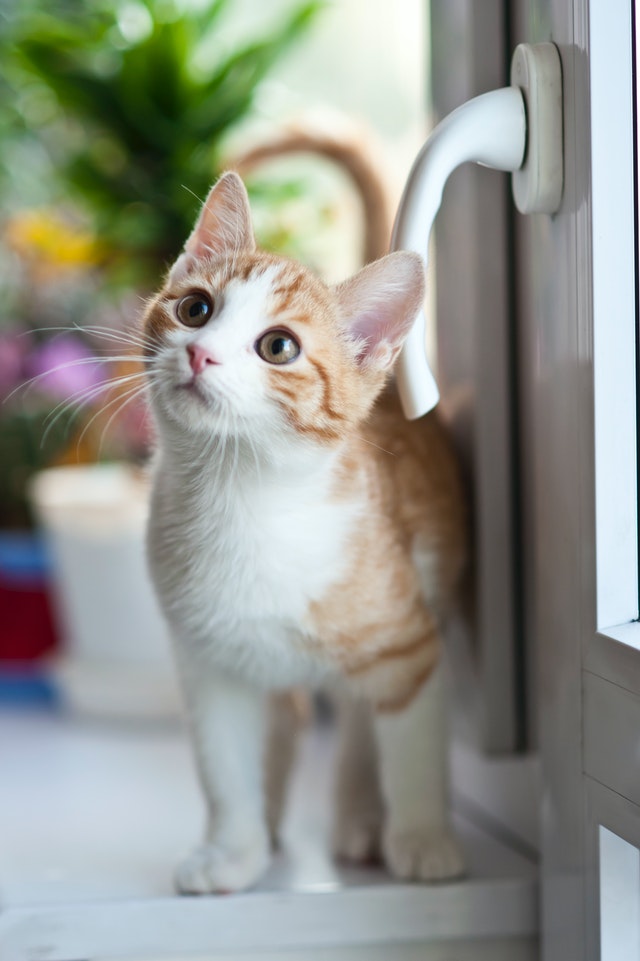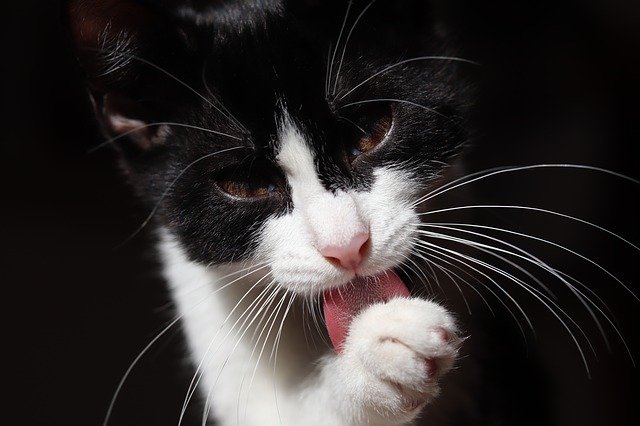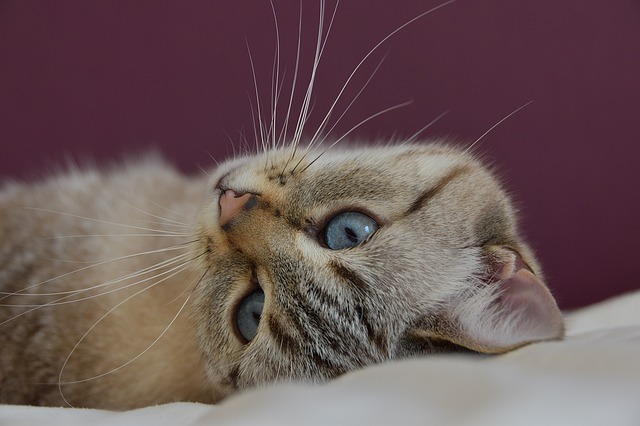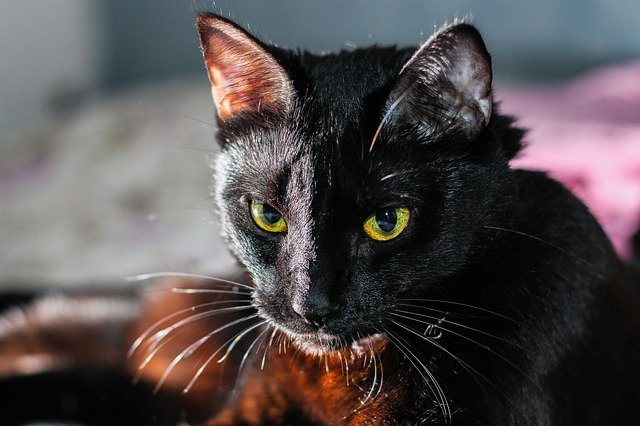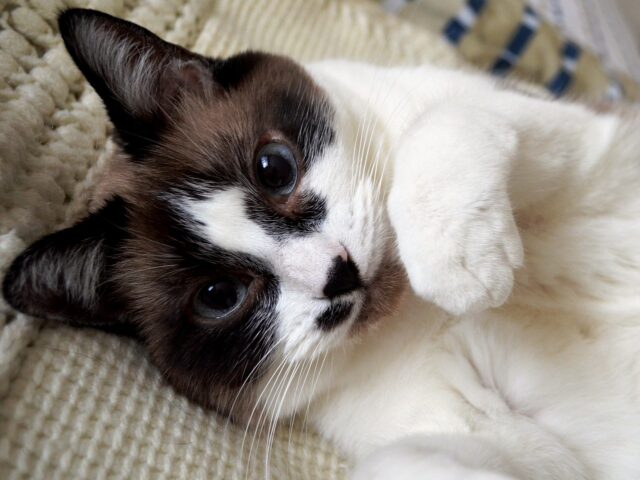Cat whiskers may look like whimsical wisps of adorability, but they give felines a deep connection to the world around them.
But what do whiskers tell a cat?
Whiskers serve to inform animals everything they need to know about their immediate environment. W. Mark Cousins, DVM, explains, “They are a powerful and important part of how a cat senses the world.”
Reporting the subtle nuances of any surroundings, they allow her to ‘see’ and ‘feel’ in a fashion humankind can’t quite understand. Science may explain it, but whiskers are another part of the feline mystique.
Let’s see if we can unravel some of the mystery around cat whiskers…
Our first riddle? What are whiskers made of?
These important sensory tools are made of keratin, just like human hair, but whiskers are 2-3 times thicker than fur strands. Known scientifically as vibrissae, these tactile hairs contain super-sensitive motion sensors. “Cats have 100–200 nerve cells per whisker,” each taking in signals at all times.
These signals are then transmitted to the deeply-embedded follicles. Set deeper than fur follicles, whisker follicles connect “securely to the sensitive muscular and nervous systems, sending information about the surroundings directly to the cat’s sensory nerves, giving it a heightened sense of feeling”.
The information given to a cat by her whiskers helps her understand what’s going on around her, helping her to best respond to any changes in the environment.
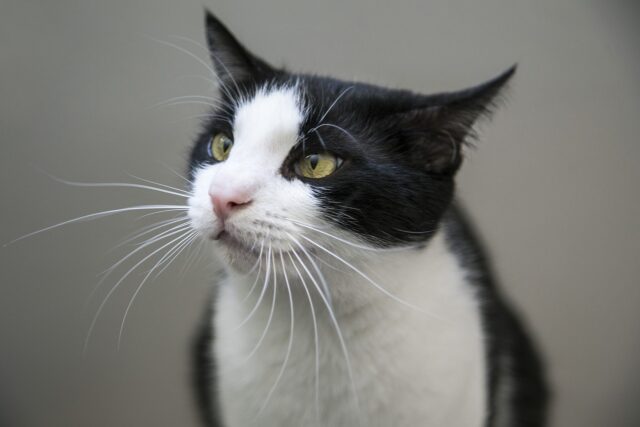
Whiskers are known scientifically as vibrissae.
Whiskers feel the space around them, reporting where and what an object looks like in a vibrational way as they touch things. They also sense changes in air currents, warning cats of impending danger by the vibrations the currents stir in their whiskers.
As cats use these tactile hairs to ‘see’ the world, its better for our furry darlings if humans leave their whiskers alone. Don’t touch cat whiskers if you can avoid it. You don’t want to throw their sensitive sensory organs into crazy chaos.
When it comes to blind cats, whiskers become their vision. According to Dr. Cousins, “Cats that are blind can navigate rooms very well by just walking around and letting their whiskers get a sense of where they are spatially.”
Another amazing example of feline adaptability!
Cat Whiskers Everywhere and at Every Length
The whiskers on a cat’s upper lip and above their eyes stand out most when we think of cat whiskers. But cats also have them on their chin, forelegs, and near the ears.
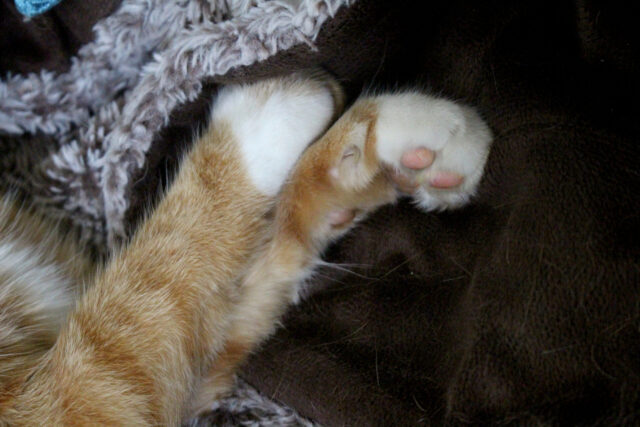
They might not be obvious, but cats have whiskers on their forelegs near the paws.
So just how many whiskers do cats have? With 24 whiskers on the upper lip (12 on each side) and the little bundles placed elsewhere, cats have whisker enough that “almost 40% of the brain’s sensory area aligns with parts of the body that have whiskers,” says Lynn Buzhardt, DVM.
But while you’ll find 24+whiskers on pretty much all cats, you won’t find vibrissae to be an exact length across cats.
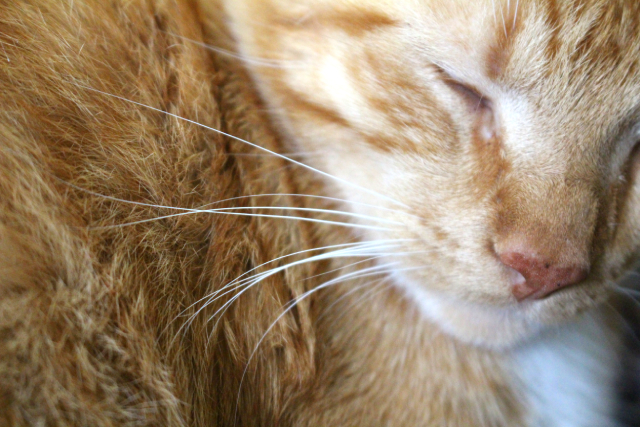
From long to stubby, cat whiskers don’t have an exact length.
If you’ve ever heard that cats use their whiskers to gauge size when it comes to squeezing through an opening, this fact is true. If whiskers won’t fit, then certainly a chonky body won’t either! This means whisker length varies from cat to cat. Slinky kitties might have shorter whiskers than a big boy tomcat. Got a cat with a barrel tummy? She’s most likely got long, lush whiskers to combat getting stuck.
Cat Whisker Positioning
You can tell much about your cat’s mood by the positioning of his whiskers.
A happy cat holds his whiskers out to the sides in a relaxed manner.
Alert, excited kitties push their whiskers forward. You know that look, the one where your cat suddenly looks like the silly kitten they once were.
A scared cat flattens his whiskers against his face. The tucked back whisker action also occurs when a cat is really and truly mad.
Like other body language cues, whiskers offer cat parents another clue in deciphering feline mood. And sometimes we need all the help we can get!
Whisker Issues and Your Questions
You might notice kitty’s whiskers looking droopy or maybe a few are missing. Perhaps they’ve started changing color. If you noticed any of this, here are some of the questions you might have when it comes to the health of your cat’s vibrassae.

Cat whiskers can experience fatigue.
What is whisker fatigue?
With their whiskers such as a sensitive touch system, felines can experience whisker fatigue when their whiskers constantly brush the sides of food or water dishes. This constant overstimulation can cause “discomfort and even pain, and it makes eating and drinking stressful.”
Look for these symptoms of whisker fatigue in cats, according to CatHealth.com:
- Scooping food out of the bowl to eat off the ground.
- Slopping food and water on the floor.
- Ignoring a full bowl while begging for food.
- Only eating if the bowl is full to the rim.
- Nervous pacing around the bowl before eating.
- Aggression at mealtime.
If any of these behaviors afflict your cat, perhaps its time to invest in new food and water dishes.
Why is my cat losing whiskers?
Its normal for kitties to lose whiskers occasionally. We know our kitty dears shed fur, and some of them shed a lot, but they also shed old whiskers to make room for a new whisker with fresh sensors.
When does whisker loss or breakage become a problem though? Any of these reasons can bring about whisker loss and should be addressed:
- Allergies
- Feline acne
- Bacterial or fungal infections
- Alopecia
- Fighting with other cats
If your fur baby has brittle whiskers or they constantly droop, make an appointment with the vet. Some illnesses can cause problems in fur and whiskers.
Does it hurt for a cat to lose a whisker?
No, losing a whisker to natural shedding does not hurt. But having a whisker pulled out or cut short will cause your cat pain.
What causes curly whiskers?
Some breeds, like the Devon Rex and Cornish Rex, have curly whiskers by nature. Other kitties can have kinky whiskers too, senior cats in particular. Sometimes a new whisker is wonky when it comes and straightens as it thickens. An older whisker can go curly too as it weakens.
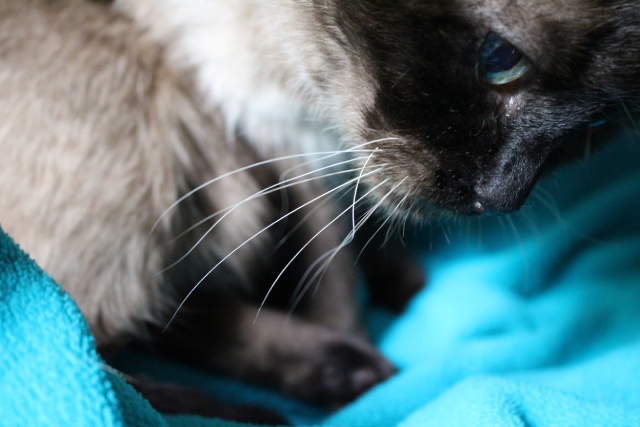
As cats age, their whiskers change, this can include darkening and texture differences.
Why are my cat’s whiskers turning black?
Like our hair, whiskers can change color with age. Instead of going gray, feline whiskers go black. But dark whiskers can occur at any age really. If your ginger tabby has one black whisker, think of it as a trendy highlight in your kitty’s whiskers!
And like curling whiskers, dark pigmentation can be part of the breed. Bombay cats have fully black whiskers, along with black paw pads and toes beans.
Should I trim my cat’s whiskers?
No. Whiskers do not need trimming. Again, do not cut cat whiskers!
As whiskers assist cats to ‘see’ in the dark, cutting them leaves felines night blind. Another reason not to cut them? More than cutting off their night vision, trimming whiskers also stunts their ability to sense the world around them. The proprioceptors in whiskers not only report information, but they also give cats amazing spatial awareness, creating one part of a cat’s graceful sense. Cutting whiskers results in a clumsy critter who can easily injure themselves.
Veterinarian Jane Brunt explains, “If you cut them, that’s like blindfolding someone, taking away one of their ways of identifying what’s in their environment.”
The wonder of whiskers reaches far beyond the physical adorability of felines, extending deep into the secrets of a cat’s keen senses. Knowing this, we must respect the whiskers as these tactile hairs are sensitive organs always hard at work!

